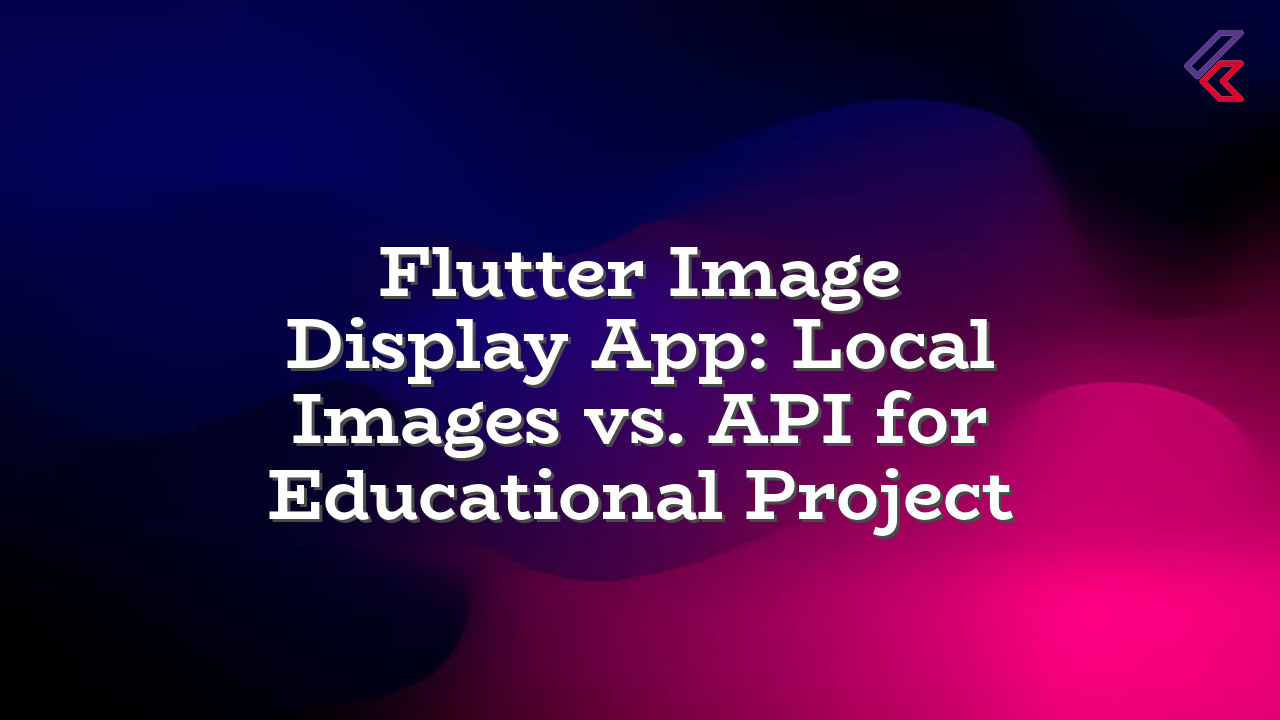This article provides a practical guide to building a Flutter application displaying images of locations, allowing user interaction and rating, for a student project. It explores efficient approaches, considering cost-effectiveness and project constraints.
Local Image Approach (Recommended for Small Projects)
For educational projects with limited scope, downloading a few images of locations and displaying them in a slideshow is a viable and cost-effective solution. You can store these images locally, avoiding API calls and their associated costs and complexities. The local approach is significantly faster and more reliable than using an API.
Implementation Steps
- Data Preparation: Download images of the relevant locations. Ensure sufficient quality and variety for your project’s needs.
- Image Display: Use a Flutter widget like
Image.network(if your images are in a URL) orImage.asset(if your images are locally stored) to display the images in a slideshow. - User Interaction: Implement widgets like
Slider,TextFields, or custom rating widgets to capture user ratings and descriptions. These can be stored locally usingSharedPreferencesor temporarily for the project. - UI Design: Structure the UI for seamless navigation between images, incorporating rating and description input fields.
API Approach (If necessary and feasible):
If the local image approach is insufficient, an API like Google Places API can be considered. However, be aware that free tiers often have request limits that could impact your project.
Using Free Image Sources
Explore free image sources such as Unsplash or Pixabay. They often offer free downloads or licenses suitable for educational projects.
Important Considerations for the API Approach
- Free Tier Limitations: Always check the free tier limitations of any API you consider. Exceeding the limit will result in errors. Carefully read the API documentation.
- Error Handling: Implement robust error handling in your code to address potential issues:
- Network Errors: Check for network connectivity before making API requests. If the network is unavailable, display a message to the user or use a local fallback.
- API Rate Limits: Implement a mechanism to prevent exceeding API limits. For example, throttle requests if a limit is encountered. Monitor your requests to ensure that you are not exceeding your limits and the API is still responding and operational.
- API Errors: Handle potential errors from the API. Display relevant error messages to the user.
Example Code Snippet (Local Image):
import 'package:flutter/material.dart';
class LocationScreen extends StatelessWidget {
// ... other code ...
@override
Widget build(BuildContext context) {
return Scaffold(
appBar: AppBar(title: Text('Location Slideshow')),
body: ListView.builder(
itemCount: locations.length,
itemBuilder: (context, index) {
final location = locations[index];
return Card(
child: Column(
children: [
Image.asset(location['image']), // Use the asset path
Text(location['name']),
// Add widgets for rating and description
],
),
);
},
),
);
}
}
Possible Errors and Solutions
- Error: API Rate Limit Exceeded: Use request throttling (delay requests to avoid exceeding the API rate limit). Monitor your requests using logging to track the requests made in a specific period. Use exponential backoff to prevent further issues.
- Error: Incorrect Image Path: Double-check that your image paths are correct when using `Image.asset` and ensure that the images are stored in the correct directory for the Flutter application to find them.
- Error: Network Issues: Use `Connectivity` package to check network connectivity before making API calls and display a message if the network is unavailable or if a timeout occurs, preventing requests and unexpected behavior.
By carefully selecting your approach and handling potential errors, you can create a robust and user-friendly Flutter application for your educational project efficiently and effectively.

